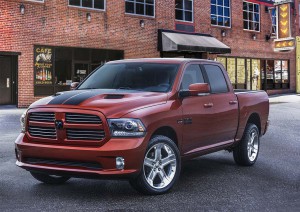
New vehicle sales in February are expected to rise slightly, led by the country's ongoing love of trucks.
February auto sales in the U.S. are likely to follow the same tepid pace from last month’s results when makers saw sales dip ever-so-slightly; however, this month they are expected to rise ever-so-slightly.
Industry consultants J.D. Power and LMC Automotive believe U.S. sales will rise less than 1% in spite of record levels of enticements aimed at new vehicle buyers. February U.S. new vehicle sales will be about 1.35 million units, up 0.6% from a year earlier, the consultancies said. Analysts at Edmunds are seconding the observation.
The seasonally adjusted annualized rate for the month will be 17.7 million vehicles, up from 17.6 million last February. The Power and LMC expect U.S. sales to eclipse last year’s record of 17.55 million units with 17.6 million in 2017.
Retail sales to consumers, which do not include multiple fleet sales to rental agencies, businesses and government, were set to post a 0.4 percent increase in February.
Even though February is historically a slow sales month, it gets a nice bump from the President’s Day holiday weekend when auto sales are usually 20% higher than an average February weekend.
“The holiday weekend is likely a contributing factor to strong sales in February, but we’re also seeing signs that automakers are starting to be a bit more aggressive to move cars off the lot,” said Jessica Caldwell, Edmunds executive director for industry analysis.
“Fleet sales were robust in February, and incentives are continuing to rise. While trucks and SUVs don’t need as much help to find interested buyers, inventories of passenger cars have been building.”
(What is the U.S. auto market likely to look like this year? Click Here for some educated guessing.)
Automakers are finding it difficult to continually draw new buyers to dealer showrooms because they’ve been selling at breakneck speed for the last two years, which were record years. Part of that effort sees them dipping back into their very reliable bag of tricks: incentives.
Through the first 12 days of February, industry incentive spending was $3,748 per new vehicle sold, the highest level ever for the month, and up $294 from a year earlier, the pair noted.
Incentives as a percentage of manufacturer’s suggested retail price were at 10.3% in February, exceeding the 10% level for the first time in the month since 2009, J.D. Power and LMC Automotive said, when the industry was in the midst of a significant downturn.
“While the retail SAAR remains robust, the elevated levels of incentives remain a fundamental threat to the long-term health of the industry,” said Deirdre Borrego, senior vice president of automotive data and analytics at J.D. Power.
(Leasing levels surge, raise concern. Click Here to see why.)
It should be noted that according to Edmunds, buyers received an average giveback of $3,635 in January, a 21.6% year-over-year increase. But it was offset as the average transaction prices, what motorists actually pay after factoring in discounts, as well as options, surged 4% over January 2016, to $34,968.
In January, the push for trucks, crossovers and sport-utilities remained strong.
“The changing mix of sales in favor of utility vehicles is the primary driver for the year-over-year strength, as average prices in SUV segments climbed modestly, while the prices of subcompact SUVs declined,” said Tim Fleming, analyst for Kelley Blue Book, last month.
(To see more about January’s U.S. auto sales, Click Here.)
“Demand for subcompact SUVs, one of the hottest segments in 2016, appears to be slowing down, although new models from Ford, Nissan and Toyota could help spark interest in the segment.”

